Are you craving a birding tour?
Tennessee can treat you to an unforgettable birding tour because it has over 400 species, ranging from the common ones like the northern cardinal to rare ones like Cassin's kingbird.
You'll visit enchanting places like the hardwood forest in Radnor Lake State Park, where over 20 songbirds reside.
But...
You can attract birds of Tennessee to your backyard with bird seed and a bird bath, so you don't have to go looking for them in forest edges.
Before you pack your birding gear, let's talk about the birds you can see in this state.
Tennessee Birds To Spot Today
1. Wood Duck
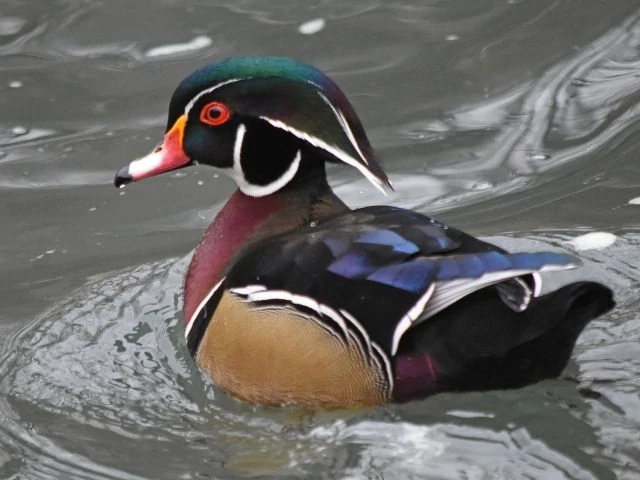
It's a very colorful waterfowl. A male's plumage is a combination of colors. It has a green crest, red eyes, a yellow spot above its bill, and a white stripe on its neck.
It's a large bird species that grows to 21.3 inches with a wingspan between 26 and 28.7 inches.
A wood duck lives in wooded swamps, marshes, beaver ponds with overgrowth, and slow streams. It nests in tree cavities or nest boxes near lakeshores, and its claws help it grip perches and tree barks.
2. Tennessee Warbler
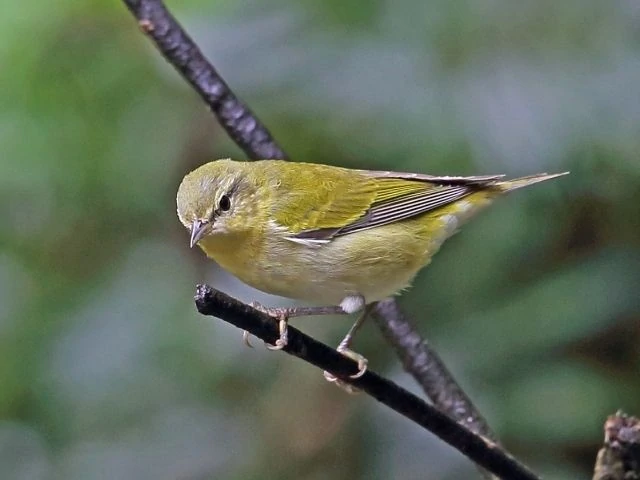
This warbler loves coniferous and deciduous forests. There's a migratory population in most states, including Tennessee, and it lives in both forests and woodlands. Insects make up most of the diet.
For instance, caterpillars make up most of the diet in summer, winter brings the urge for nectar, and fall sees it add fruit to the menu.
A Tennessee warbler is between 3.9 and 5.1 inches long. Some common characteristics of both sexes are short tails and thin bills. A female has yellow-green upperparts and either whitish or yellowish underparts. A breeding male has a similar underbelly, a gray cap, and no wing bars.
3. Mourning Dove
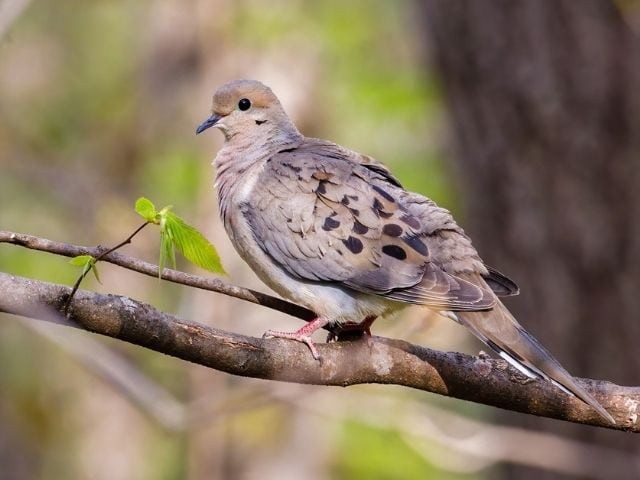
It's a resident bird in this state, and its range includes urban areas, farms, and woodlands. A mourning dove is almost the size of a northern flicker because its body length is between 9.1 and 13.4 inches.
You'll know it by its plump body, a long pointed tail, short legs, and small round head. It has a grayish back with spotted wings and a peach underside.
4. American Robin
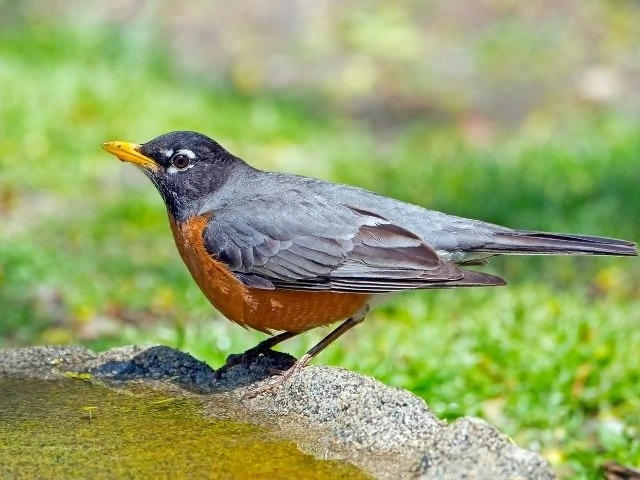
It may be as popular as the house finch, but it loves wild habitats like mountain forests, often spending time roosting away from backyards. It moves in flocks of almost a quarter a million birds.
Robins have striking plumage. The male has a gray back, a dark head, and a rusty underbelly. The female bird has the same colors, but it's paler.
It's the largest thrush in North America, flaunting a body length between 7.9 and 11.0 inches. That means an American robin grows larger than the more colorful eastern bluebird as a bluebird's body length is between 6.3 and 8.3 inches. You can also spot the eastern bluebird in Tennessee.
5. Barn Swallow
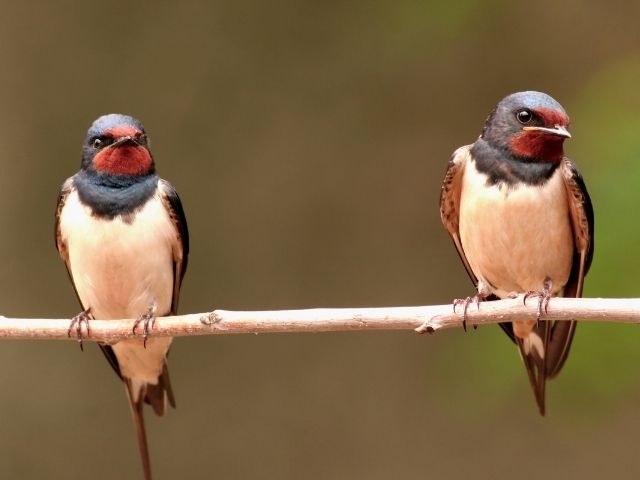
North America is its breeding range, while Central and South America are the wintering zones.
Its body size is between 5.9 and 7.5 inches long. It has broad shoulders and long, pointed wings.
6. Northern Harrier
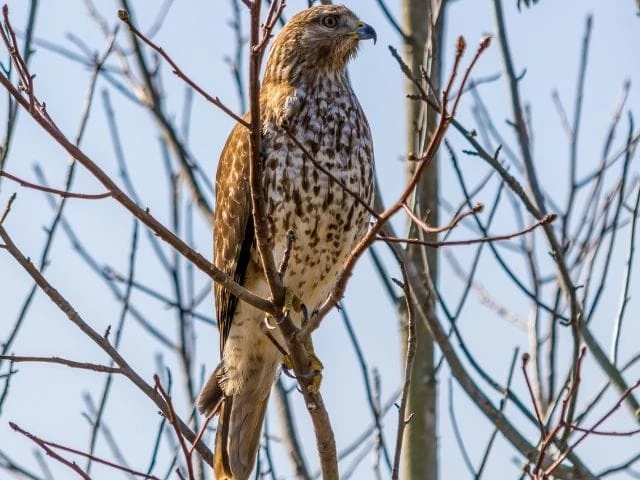
You'll know the northern harrier by its broad wings, long tail, a white patch on the rump, and grayish upperparts. But, the female bird has brown streaking on its underside. It's a large raptor with the face of an owl and a sharp, hooked bill. Its body length ranges from 18.1 to 19.7 inches.
It winters throughout the US, Central, and South America. It eats small mammals, reptiles, songbirds, and carcasses.
7. Downy Woodpecker
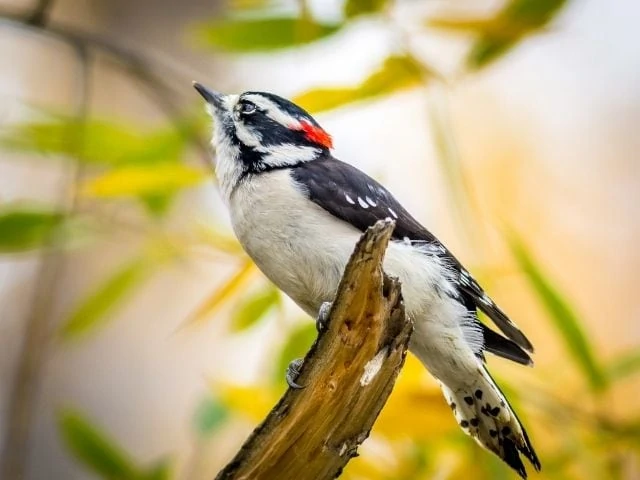
It's possible to confuse this species with the hairy woodpecker, more so because they both live in Tennessee.
You can tell them apart by their size and physical features, not color. A downy is between 5.5 and 6.7 inches long, while a hairy woodpecker is between 7.1 and 10.2 inches long. You'd have to be close to the bird to use size to ID it.
Therefore, let's talk about other features. For instance, a downy has a smaller bill, and its outer tail feathers have spots.
8. European Starling
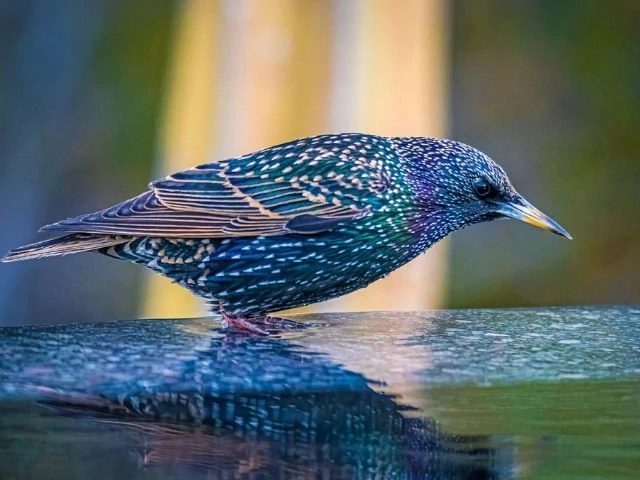
It's a common species in North America. A breeding adult has a purplish-green plumage and a yellow bill, while a nonbreeding adult has elaborate spots on its plumage, and its bill is darker.
A European starling is larger than a house sparrow as its body length is between 7.9 and 9.1 inches. However, it's smaller than an American robin.
It's very vocal, and it imitates the calls of dozens of birds, including the northern flicker, American robin, and the wood thrush.
You'll see this bird in urban centers, sometimes perched on wires or feeding on the ground.
It eats seeds, grasshoppers, snails, spiders, and earthworms.
9. American Goldfinch

You'll love staring at the yellow, white, and black plumage of an American goldfinch. However, only a breeding male has such colorful plumage because it molts into pale wing bars and brown upper and underparts. A female American goldfinch has dull yellow underparts and an olive back.
It's not as large as a tufted titmouse as its body length is 4.3 to 5.1 inches, whereas a titmouse can grow to 6.3 inches.
It lives in weedy areas, fields with overgrowth, and open floodplains.
10. Eastern Towhee
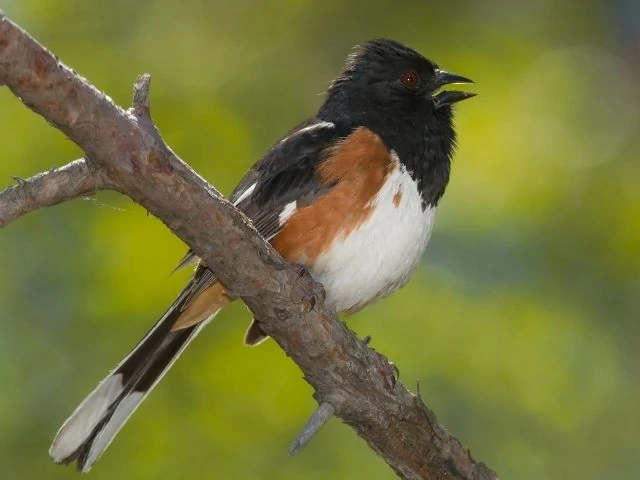
There's a resident population throughout this state, but you'll also come across a breeding range in east Tennessee.
An eastern towhee is larger and heavier than a song sparrow. Most of the time, you'll see it foraging in a forest's undergrowth. It also spends time in thickets and forest edges.
A male eastern towhee has a black back and head, rufous sides, and a white belly. However, a female bird has a brown back and head, a white underbelly, and rufous sides.
11. Brown Thrasher

There's a resident population in Tennessee; therefore, you can see it any time of the year. It's an elusive species, but you may spot it hiding in dense shrubs.
It's a short-distance migrant with long legs, a long tail, and a long curved bill. It has reddish-brown upperparts, black and white wing bars, and a streaked underside.
It's between the size of a blue jay and a northern mockingbird.
12. Great Blue Heron
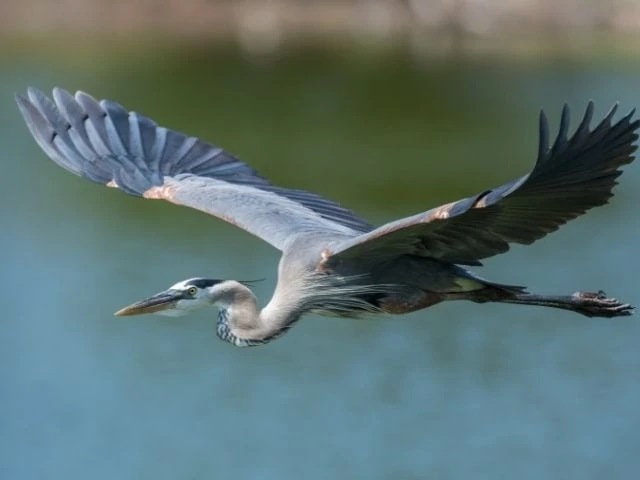
This heron is a large Tennessee bird with a body length between 38.2 and 53.9 inches. It's longer than a bald eagle but with less weight and a shorter wingspan.
You'll know it by its grayish-blue feathers, a set of black, long head plumes, long legs, and an orange-yellow bill.
13. Sandhill Crane
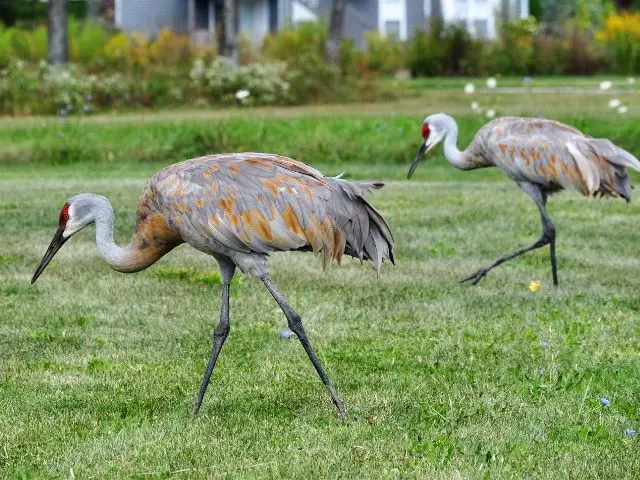
Tennessee has a migratory population. It's a tall bird with drooping tail feathers, a red crown, long legs, and a long, thick bill. Its plumage is gray with some tan feathers. It's heavier than a great blue heron but smaller as its body length is 47.2 inches.
14. Carolina Chickadee
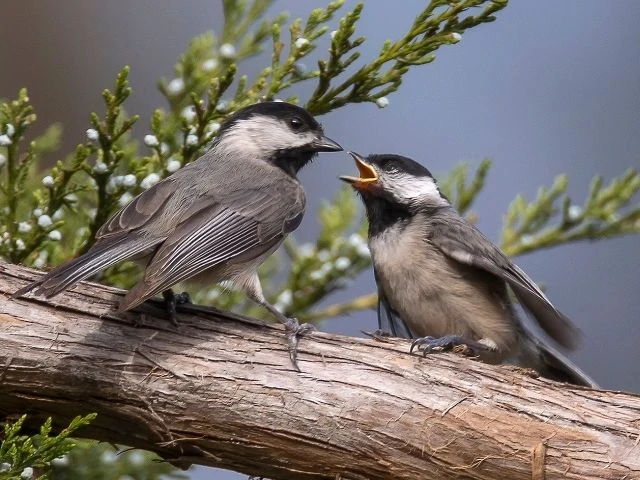
It lives in a few eastern states, including Tennessee. This chickadee resembles the black-capped chickadee. It winters in small flocks of two to eight birds and is very territorial.
A Carolina chickadee's body length is between 3.9 and 4.7 inches. You'll know it by its black cap and throat, white cheeks, and gray back. It has a small bib and a long tail.
15. Song Sparrow
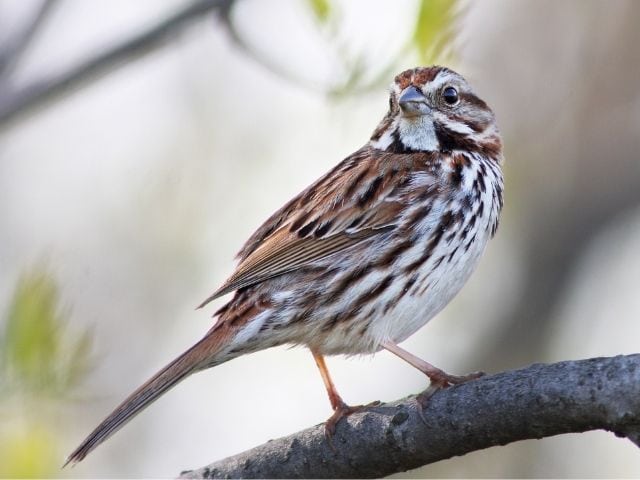
You'll know it's a song sparrow if its whole body has brown streaks. It lives in various habitats, from rain forests to farms, freshwater marshes, grasslands, and forest edges. This variety gives it so many food choices, so in addition to seeds and fruits, it also eats caterpillars, earthworms, and grasshoppers.
A song sparrow is larger than a rufous hummingbird as the former's body length is between 4.7 and 6.7 inches, while the latter doesn't exceed 3.5 inches.
16. House Finch
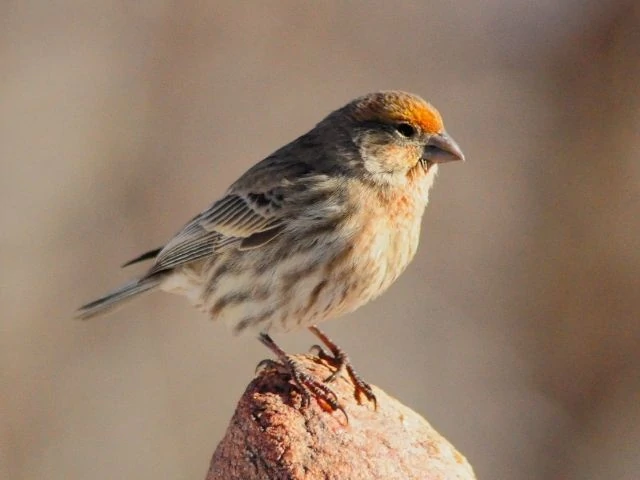
You'll see a finch anywhere in Tennessee. It'll be among the first birds of Tennessee to visit your bird feeder because it's social. When it's not eating seeds in a feeder, it lives in forest edges and farms.
It's 5.1 to 5.5 inches long, about the size of a house sparrow. The male and female have.
As Cornell Lab explains, a male finch gets red plumage from its food. If the food has less pigment, you're likely to see yellowish males in that region. All that color is not for nothing because the females notice and choose the most striking male.
17. Indigo Bunting

It's smaller than a house finch as it grows between 4.7 and 5.1 inches long. Males and females have different plumage, with a male flaunting blue plumage while a female is brown with slight streaking on the chest.
This solitary bird has a breeding population in North America. The resident population is in Central America, and it only flocks when migrating or in its winter habitat.
It eats insects, seeds, and berries in forests. If it's on your birding list already, you'll have to explore forest edges, hedgerows, or brushy fields.
18. Ruffed Grouse
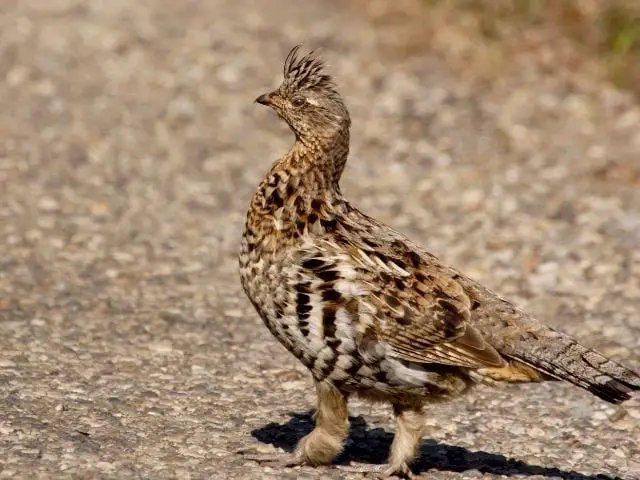
The male bird loves to show off, spreading its tail feathers like a fan.
It's medium-sized, averaging 15.8 to 19.7 inches long. That's almost the size of an American crow. You'll find the ruffed grouse foraging on forest floors where there are always seeds and insects to enjoy.
Some places to search for this grouse are forested streams and mixed forests of deciduous and coniferous trees. It lives all over the state except the southeastern edge.
19. Wild Turkey
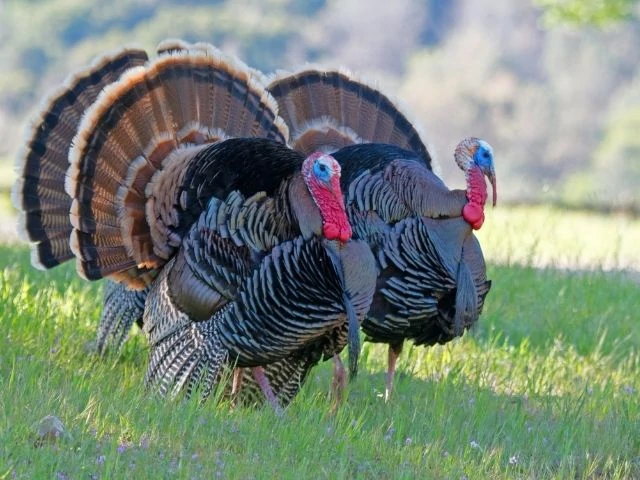
It's a popular bird in North America, a resident of many states except some western states. The bare neck and face may have red, blue, or gray tones. It has barred wings, rusty or white tail feathers, and bronze-green plumage.
A wild turkey is large and heavy. It flaunts a body length between 43.3 and 45.3 inches and weighs up to 24 pounds. You'll always see this species in flocks roosting on trees or foraging nuts, insects, snails, or berries.
Have you spotted these in Tennessee, or would you like to put all of them on your birding list?
Before you go:
Frequently Asked Questions
What Are The Rarest Birds In Tennessee?
This state has several rare species, some of which excited birders when they showed up in recent years. For example, there were sightings of rare species, such as Cassin's kingbird, Pacific-slope flycatcher, white-throated swift, and Bullock's oriole between 2020 and 2021.
What Are The Most Common Birds In Tennessee?
The ones you're likely to see any time of the year include the northern cardinal, Carolina chickadee, Carolina wren, blue jay, American crow, and the tufted titmouse. If you have a bird feeder, then backyard visitors will include the northern cardinal, the mourning dove, and the downy woodpecker.
What Kinds Of Birds Live In Tennessee?
The Tennessee Wildlife Resources Agency lists 100 common species, such as finches, towhees, and blackbirds. You'll come across birds that eat seeds, others that eat dead birds, and omnivorous ones.
Here's a video of winter birds feeding in East Tennessee:
Final Thoughts
Tennessee is a paradise for bird lovers. Its variety of birding zones, from mountains to hardwood forests, creates a haven for resident and migratory species. In summer or winter, there's always a place to explore.
Simple ID details when bird watching include size, plumage, nest type, and habitat. Sometimes, you also have to listen to the calls to differentiate species. It'll be exciting to see how many species you locate among the hundreds that call Tennessee home.

